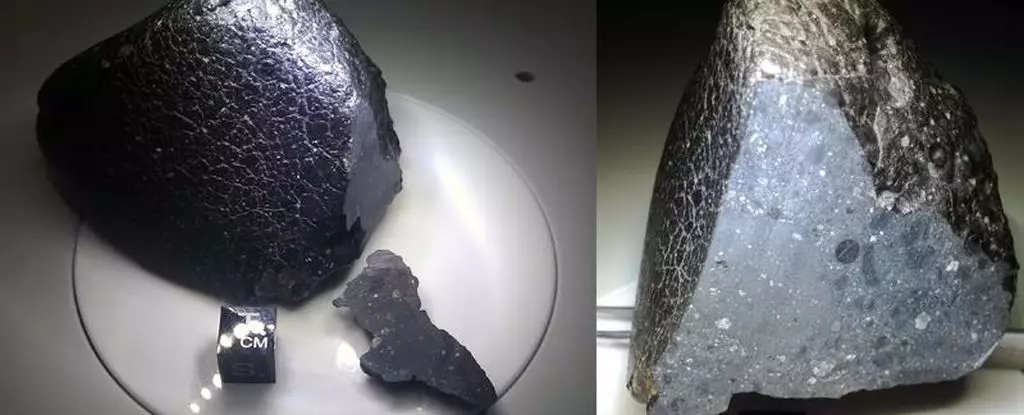Recent discoveries suggest that Mars, our neighboring planet, was not always the arid landscape we see today. As early as 4.45 billion years ago, shortly after its formation from the primordial matter of the solar nebula, there is compelling evidence to support the idea that liquid water existed on its surface. The cornerstone of this assertion comes from a minute grain of zircon, smaller than a human hair, which houses minerals intimately linked with the presence of water. This vital element, necessary for life as we know it, may have existed on Mars in a state that echoes the geothermal hot springs found on Earth, hinting at a dynamic and possibly habitable environment.
This elemental evidence allows scientists to draw parallels between the primordial waters of Earth and Mars. Notably, the zircon’s formation required hot water, possibly akin to hydrothermal systems, where heated water circulates through cracks in the Earth’s crust. Such environments are known to host extremophiles—super resilient microorganisms that thrive in conditions traditionally considered inhospitable. Geologist Aaron Cavosie, associated with Curtin University, underscores the exciting notion that the early conditions on Mars could have mirrored those of Earth at its infancy, thereby inviting speculation about microbial life potentially existing on the Red Planet during that era.
While the record of water history on Mars remains fragmented due to physical distance and the limited scope of human exploration, significant breakthroughs in our understanding emerge as we analyze Martian meteorites that have made their way to Earth. A standout in this category is NWA 7034, also known as ‘Black Beauty,’ discovered in the Sahara Desert in 2011. This volcanic rock, a complex mixture of materials resembling a celestial Christmas pudding, contains zircon crystals that serve as invaluable time capsules.
Recent studies undertaken by scientists, including Jack Gillespie, reveal that this meteorite endured a violent collision with an asteroid 4.45 billion years ago. The focused inquiry into the zircon crystals allowed researchers to uncover traces of iron, yttrium, aluminum, and sodium—minerals that offer insights into the conditions under which the zircon formed. Interestingly, these layers resemble trace element distributions observed in zircons from Earth’s Olympic Dam, suggesting that similar geological processes could have prevailed on Mars, effectively linking the two planets through their shared cosmic history.
Despite the significant findings, many questions linger regarding the specifics of water on Mars. For instance, the temperature of Martian water remains uncertain; it could range from moderately warm to more than 500 °C (932 °F), comparable to geothermal springs found in places like Yellowstone National Park. Furthermore, the extent of Martian water availability at that time cannot be fully ascertained but indicates that the planet was potentially more water-laden than previously assumed. This leads to fascinating considerations about the environmental conditions that could have existed, such as significant quantities of warm and wet areas both beneath and, perhaps, on the surface of Mars.
Consequently, the theories surrounding Mars’s early aqueous state suggest the possibility of favorable living conditions. The factors influencing this water-ocean inclusion might have been analogous to those that allowed water to coalesce on Earth—namely, through the influx of comets and asteroids that delivered moisture-rich materials during the planet’s formative years.
Implications of Discovering Warm Water on Mars
The recent evidence of early hot water on Mars stirs excitement within the scientific community, as it paves the way for further exploration into the planet’s potential habitability. As researchers strive to unravel the dynamics that led to the establishment of hydrothermal systems, the implications become clearer: if Mars hosted sufficient warm water, it might have sustained microbial life during its nascent phase. Continuing examination of NWA 7034 and similar meteorites could yet provide answers regarding whether the volcanic activity heating the Martian water stemmed from internal processes or external impacts from the asteroid bombardment of the early Solar System.
As we delve deeper into the remnants of Martian history encapsulated in meteorites, the narrative grows richer and more compelling. The journey of a single zircon crystal from Mars, reflecting millennia of cosmic events and geological processes, offers a profound connection between two planets that, while distinct in their current forms, once shared similar origins.
The story of water on Mars is one of cosmic survival and endless questions. The remarkable resilience of materials like zircon illustrates not only the harsh realities of extraterrestrial environments but also the intricate histories encoded within them. As lunar and Martian explorations expand in scope and technology, we inch closer to understanding not only the habitability of our celestial neighbors but the fundamental mysteries of life itself. The findings surrounding early Martian water reiterate the necessity of exploring our own understanding of life’s potential to thrive in diverse conditions across the universe. Each meteorite and piece of evidence brings us one step closer to understanding not just the past of Mars, but potentially, the future of our quest for life beyond Earth.


Leave a Reply